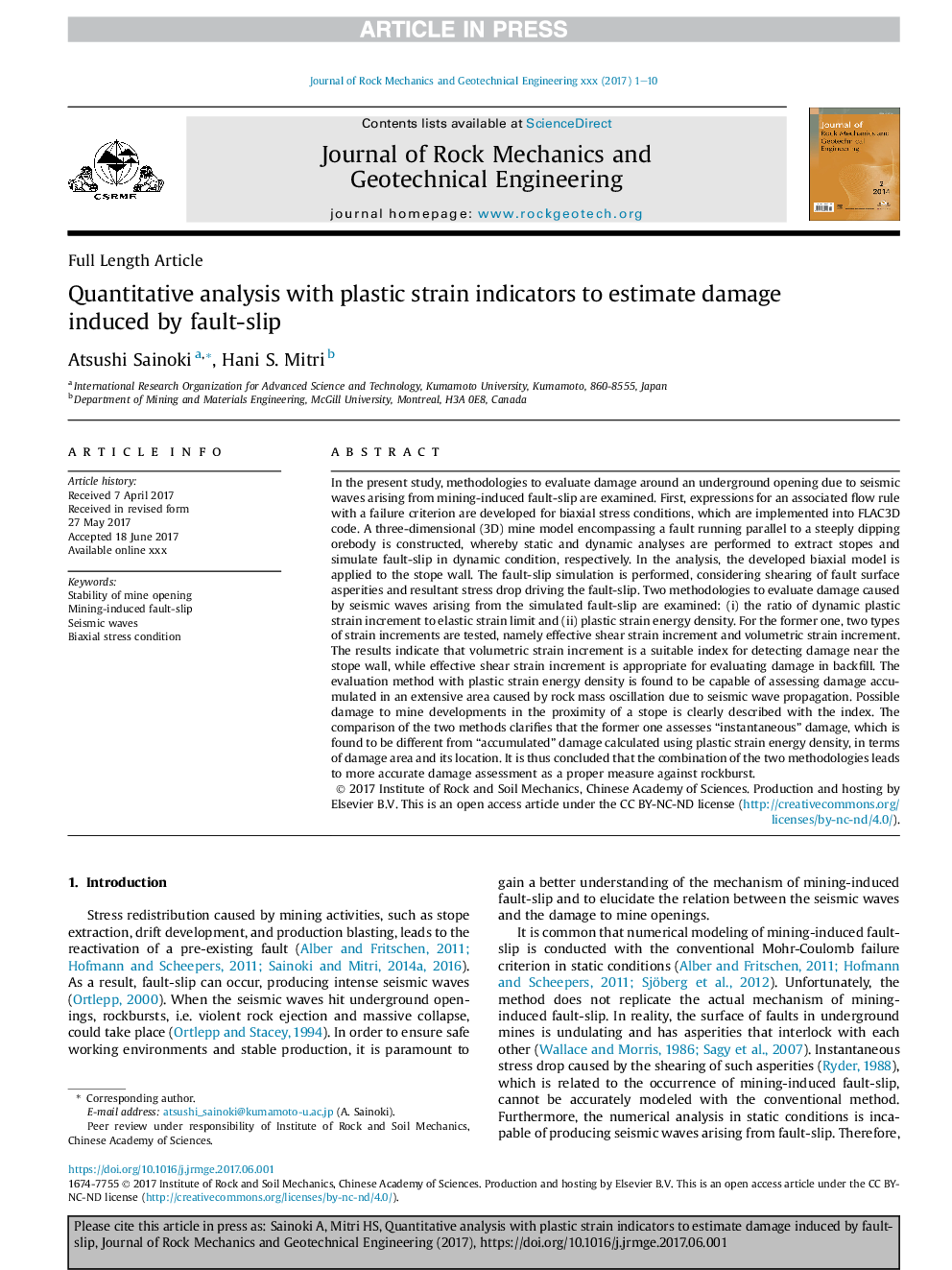| Article ID | Journal | Published Year | Pages | File Type |
|---|---|---|---|---|
| 6752346 | Journal of Rock Mechanics and Geotechnical Engineering | 2018 | 10 Pages |
Abstract
In the present study, methodologies to evaluate damage around an underground opening due to seismic waves arising from mining-induced fault-slip are examined. First, expressions for an associated flow rule with a failure criterion are developed for biaxial stress conditions, which are implemented into FLAC3D code. A three-dimensional (3D) mine model encompassing a fault running parallel to a steeply dipping orebody is constructed, whereby static and dynamic analyses are performed to extract stopes and simulate fault-slip in dynamic condition, respectively. In the analysis, the developed biaxial model is applied to the stope wall. The fault-slip simulation is performed, considering shearing of fault surface asperities and resultant stress drop driving the fault-slip. Two methodologies to evaluate damage caused by seismic waves arising from the simulated fault-slip are examined: (i) the ratio of dynamic plastic strain increment to elastic strain limit and (ii) plastic strain energy density. For the former one, two types of strain increments are tested, namely effective shear strain increment and volumetric strain increment. The results indicate that volumetric strain increment is a suitable index for detecting damage near the stope wall, while effective shear strain increment is appropriate for evaluating damage in backfill. The evaluation method with plastic strain energy density is found to be capable of assessing damage accumulated in an extensive area caused by rock mass oscillation due to seismic wave propagation. Possible damage to mine developments in the proximity of a stope is clearly described with the index. The comparison of the two methods clarifies that the former one assesses “instantaneous” damage, which is found to be different from “accumulated” damage calculated using plastic strain energy density, in terms of damage area and its location. It is thus concluded that the combination of the two methodologies leads to more accurate damage assessment as a proper measure against rockburst.
Keywords
Related Topics
Physical Sciences and Engineering
Earth and Planetary Sciences
Geotechnical Engineering and Engineering Geology
Authors
Atsushi Sainoki, Hani S. Mitri,
